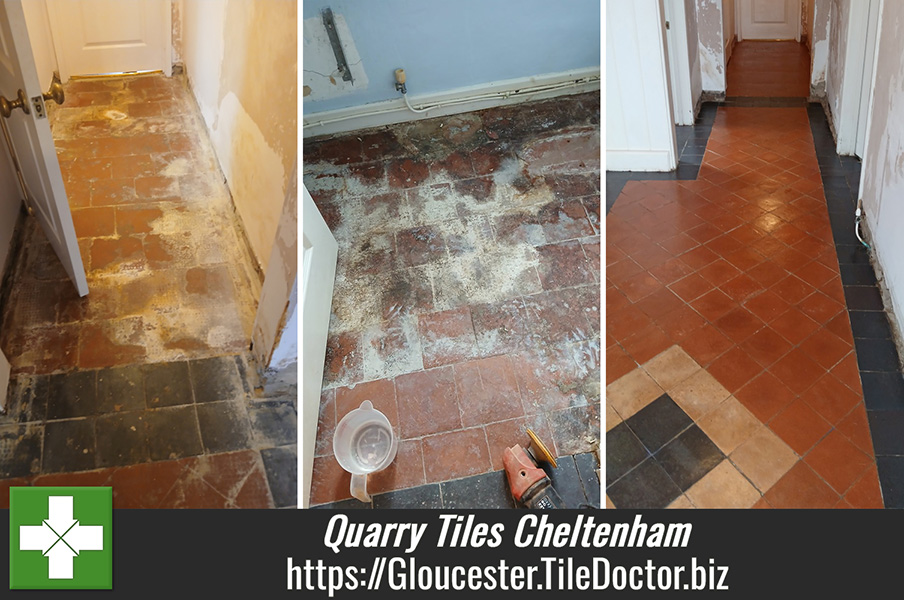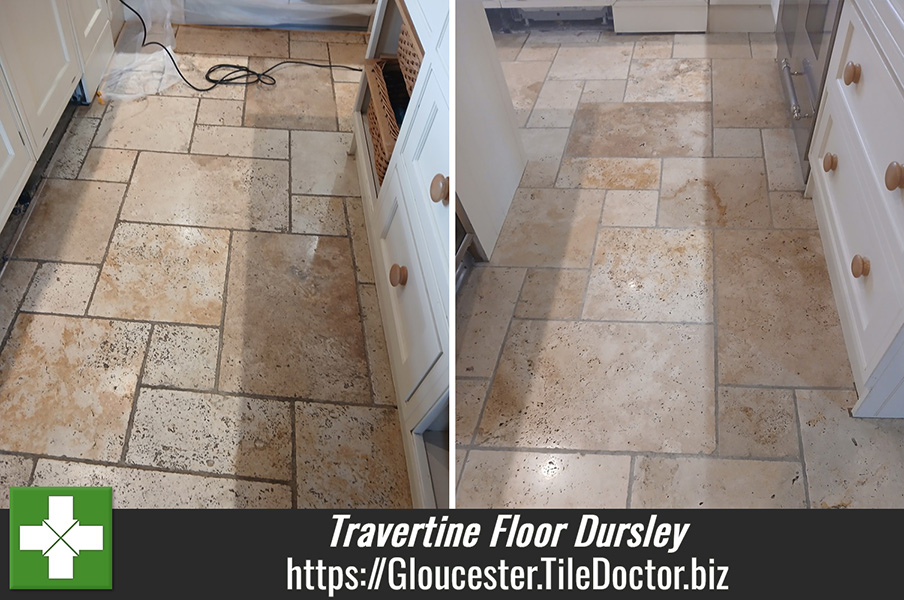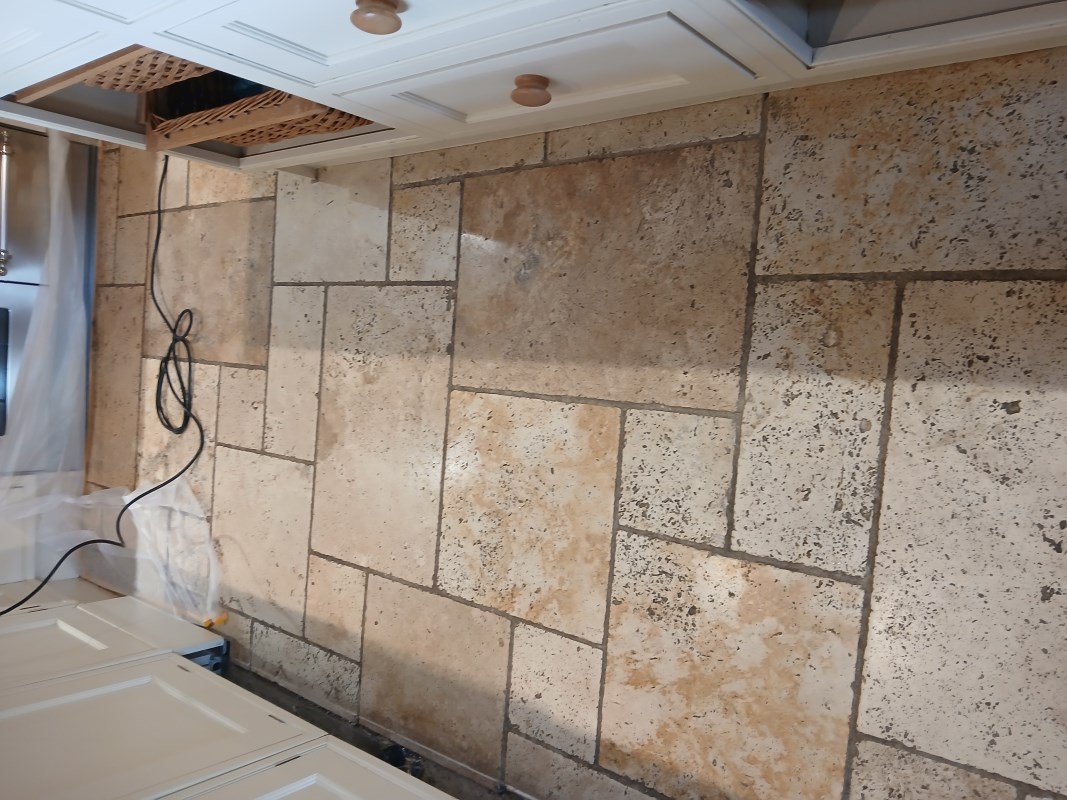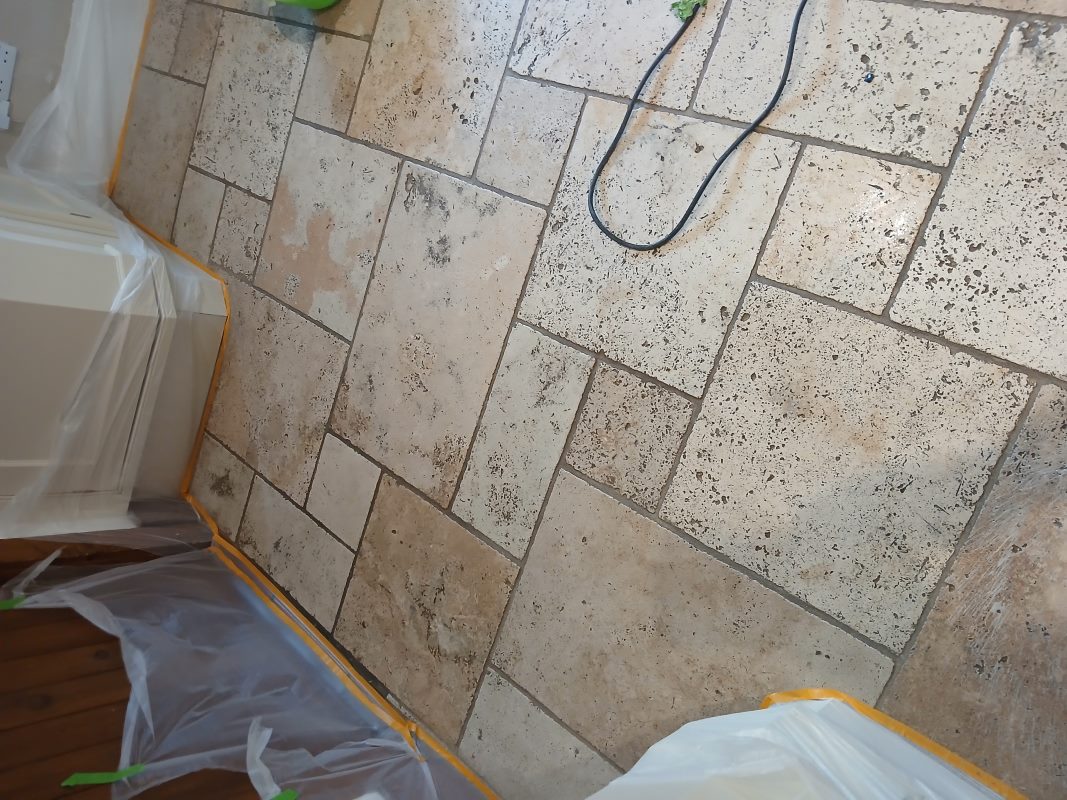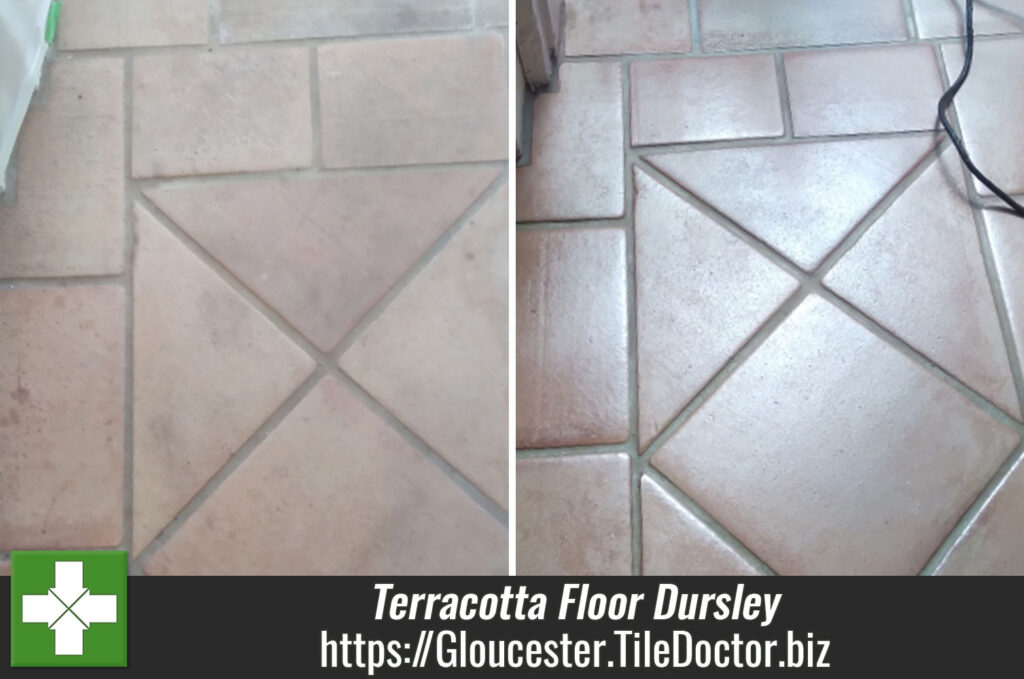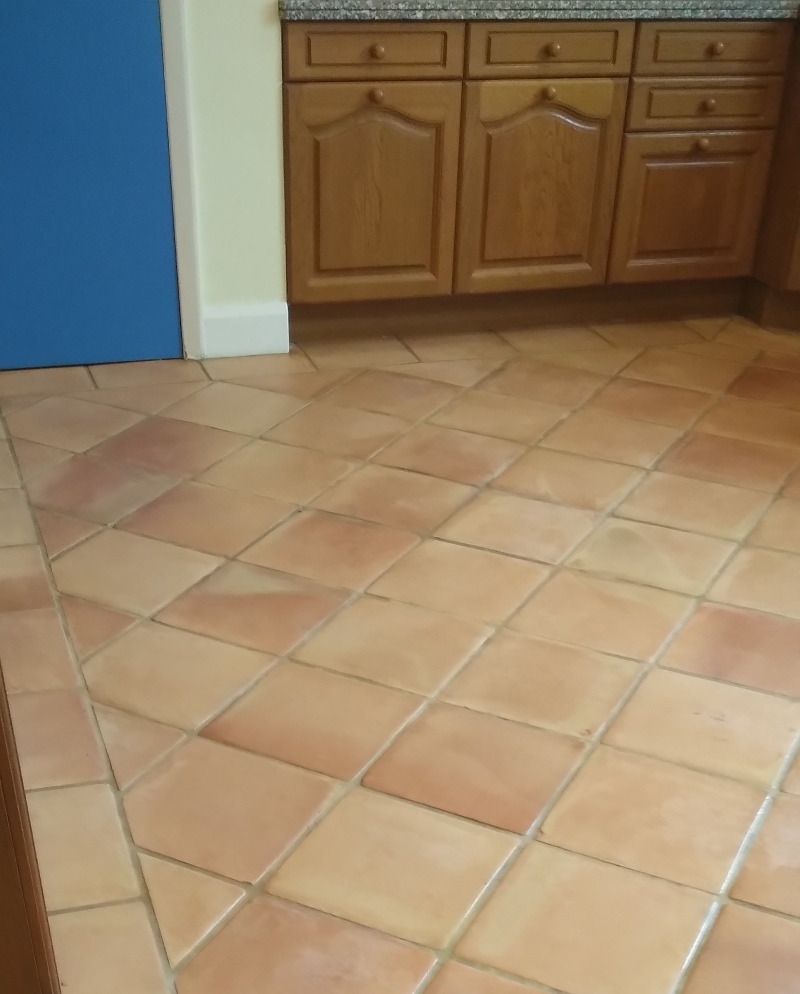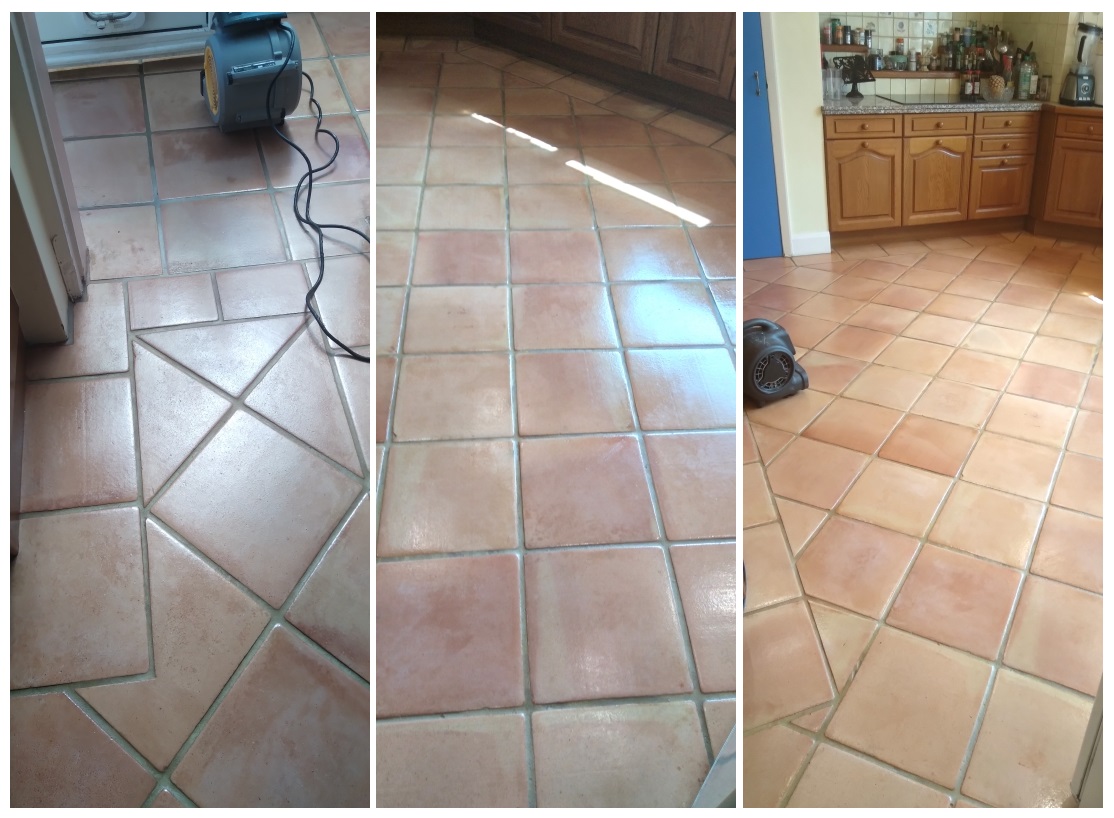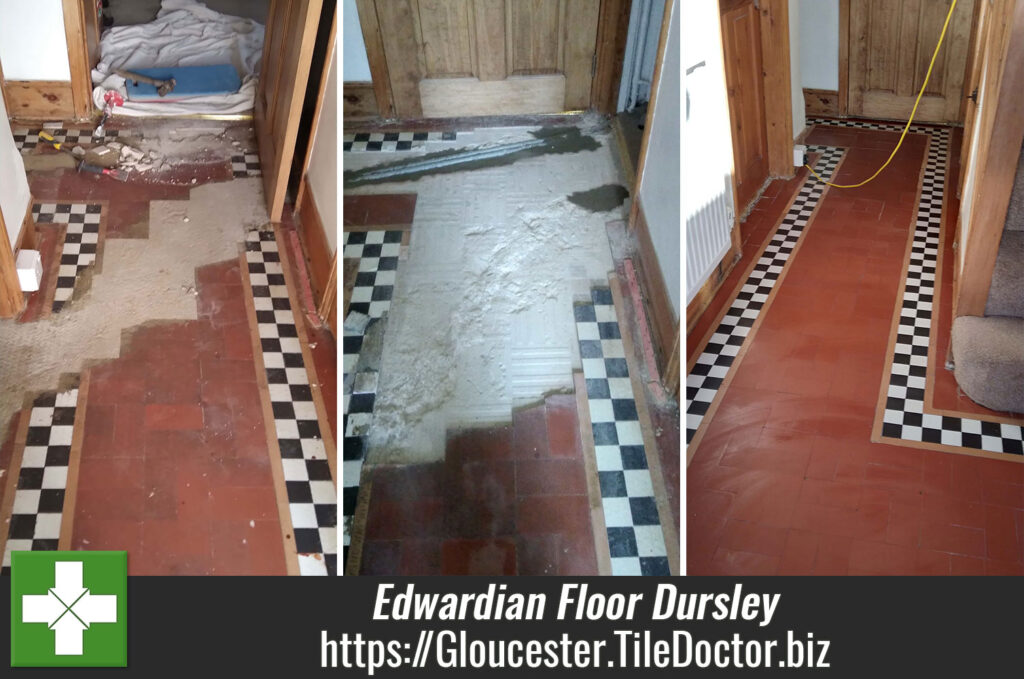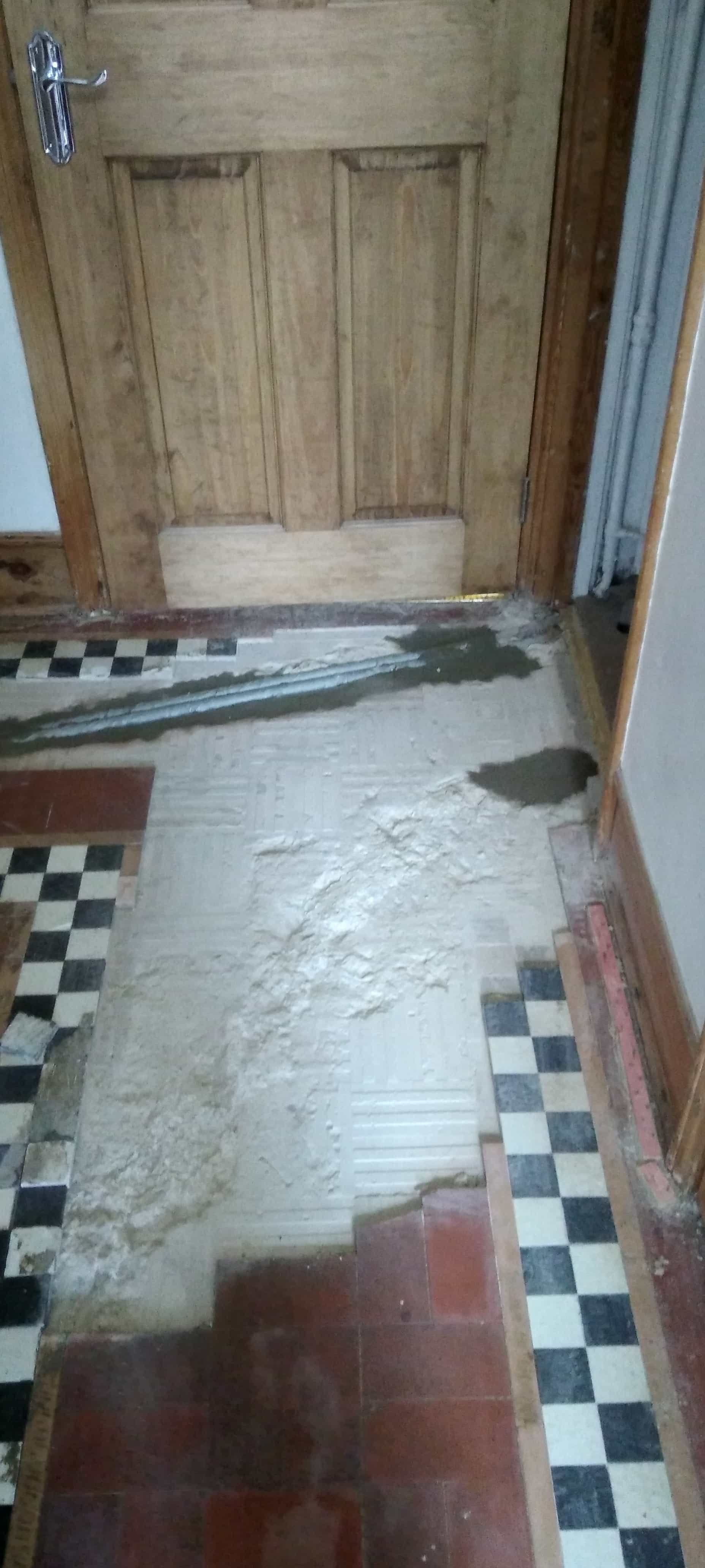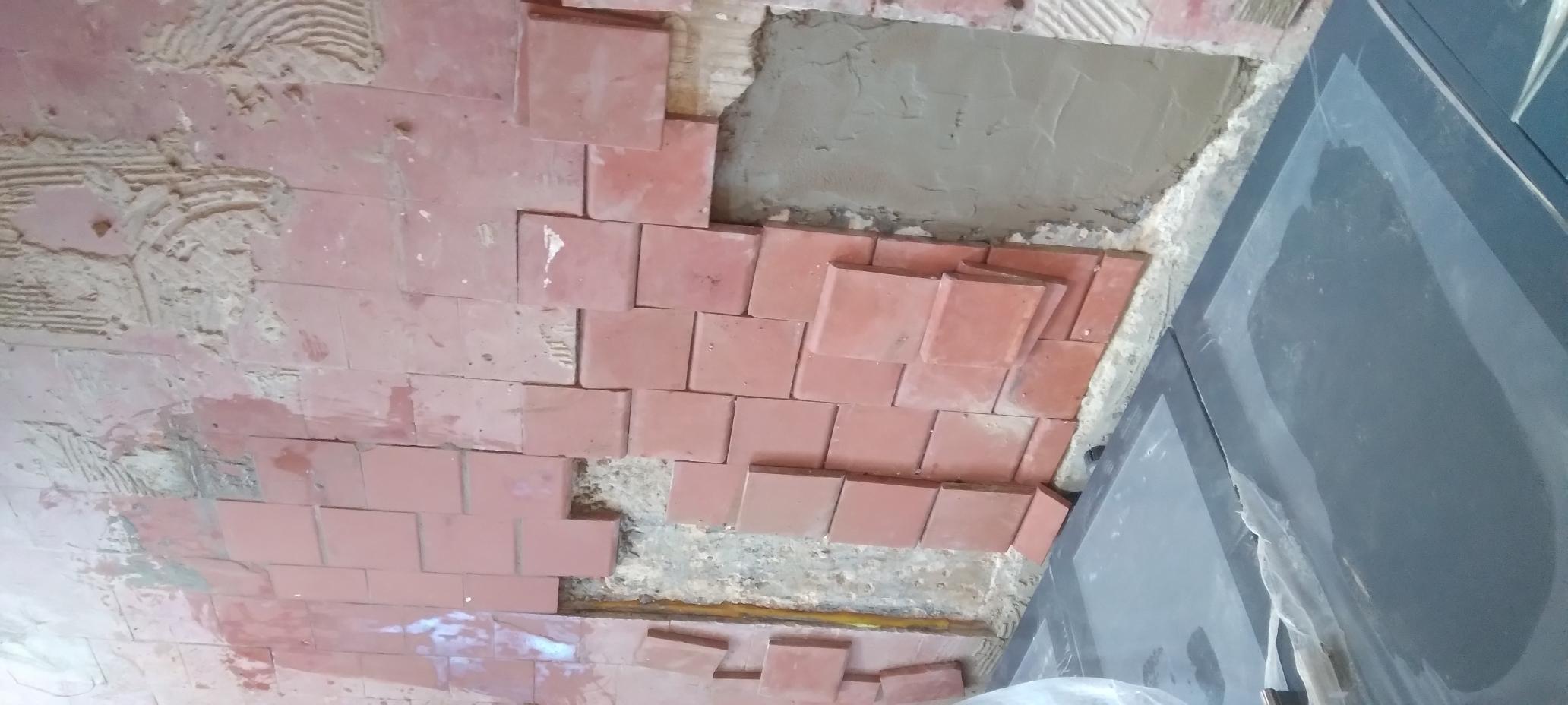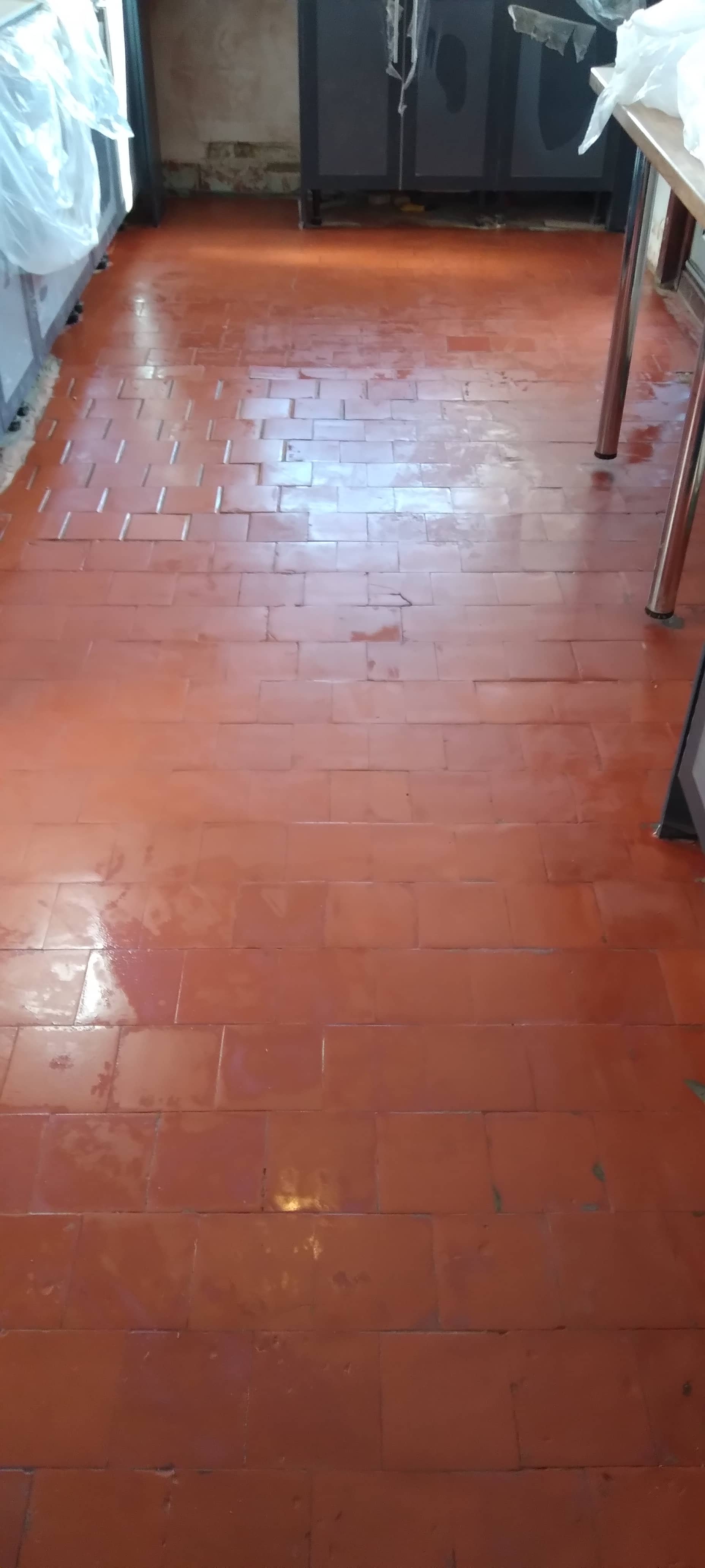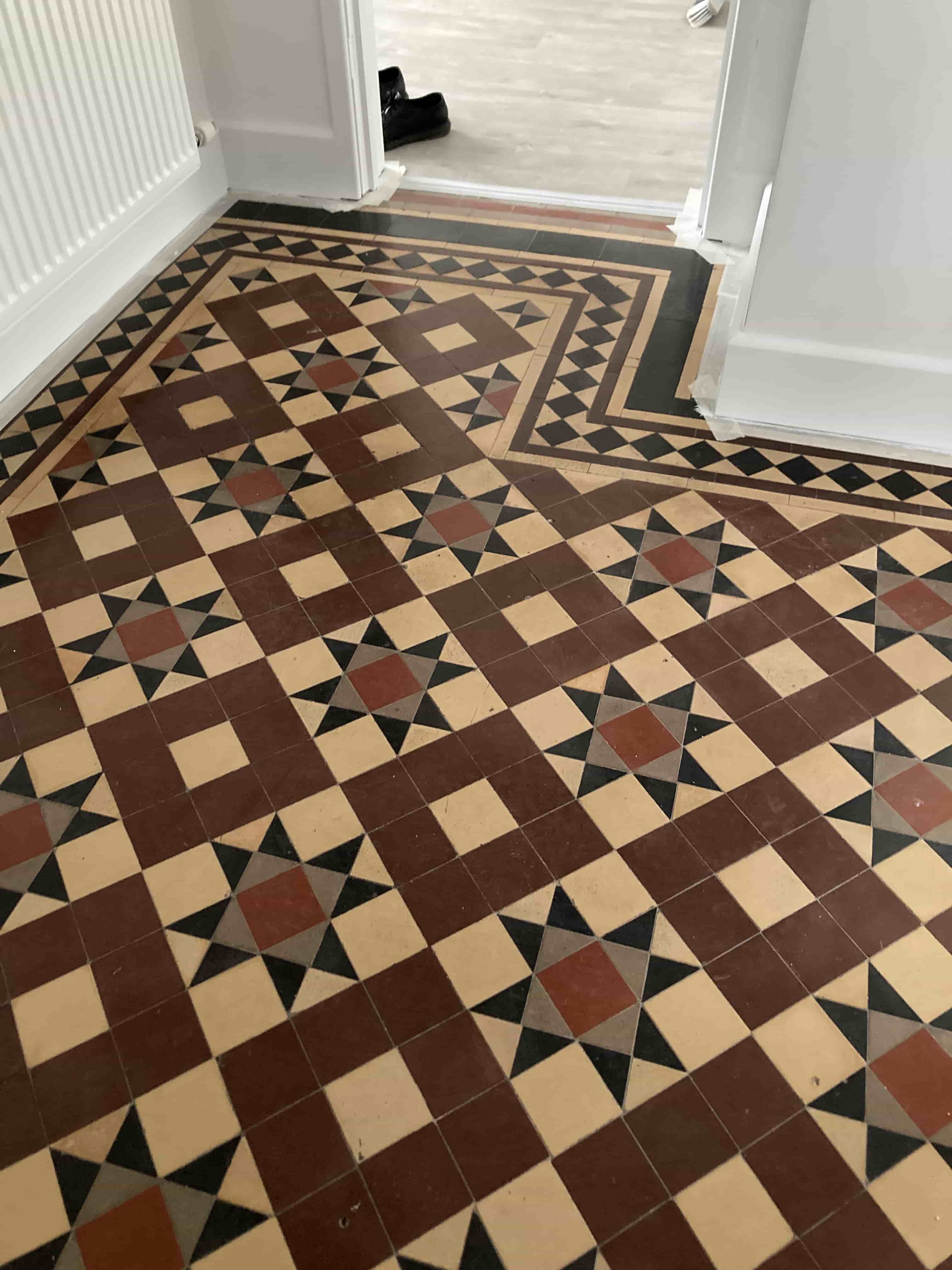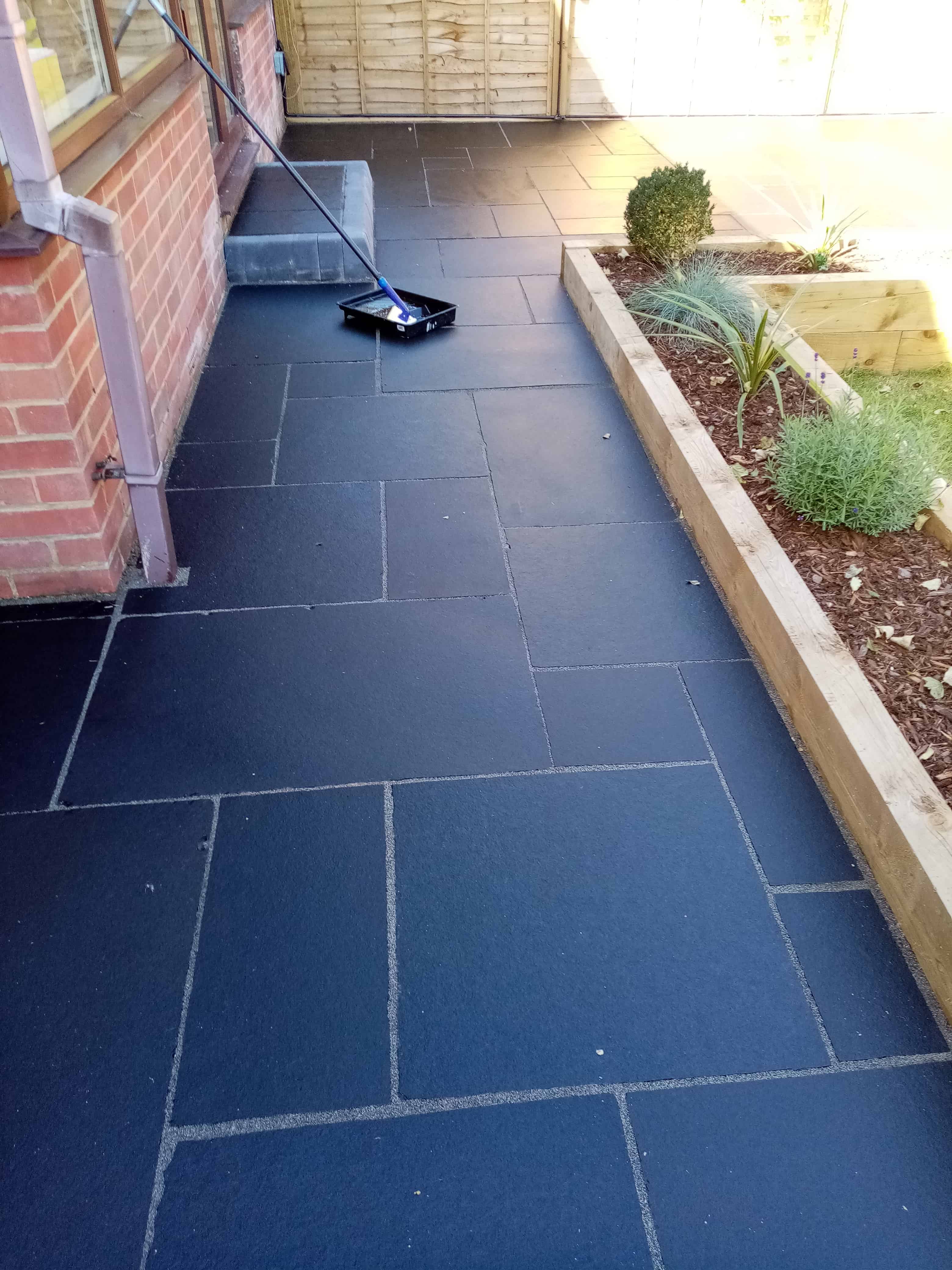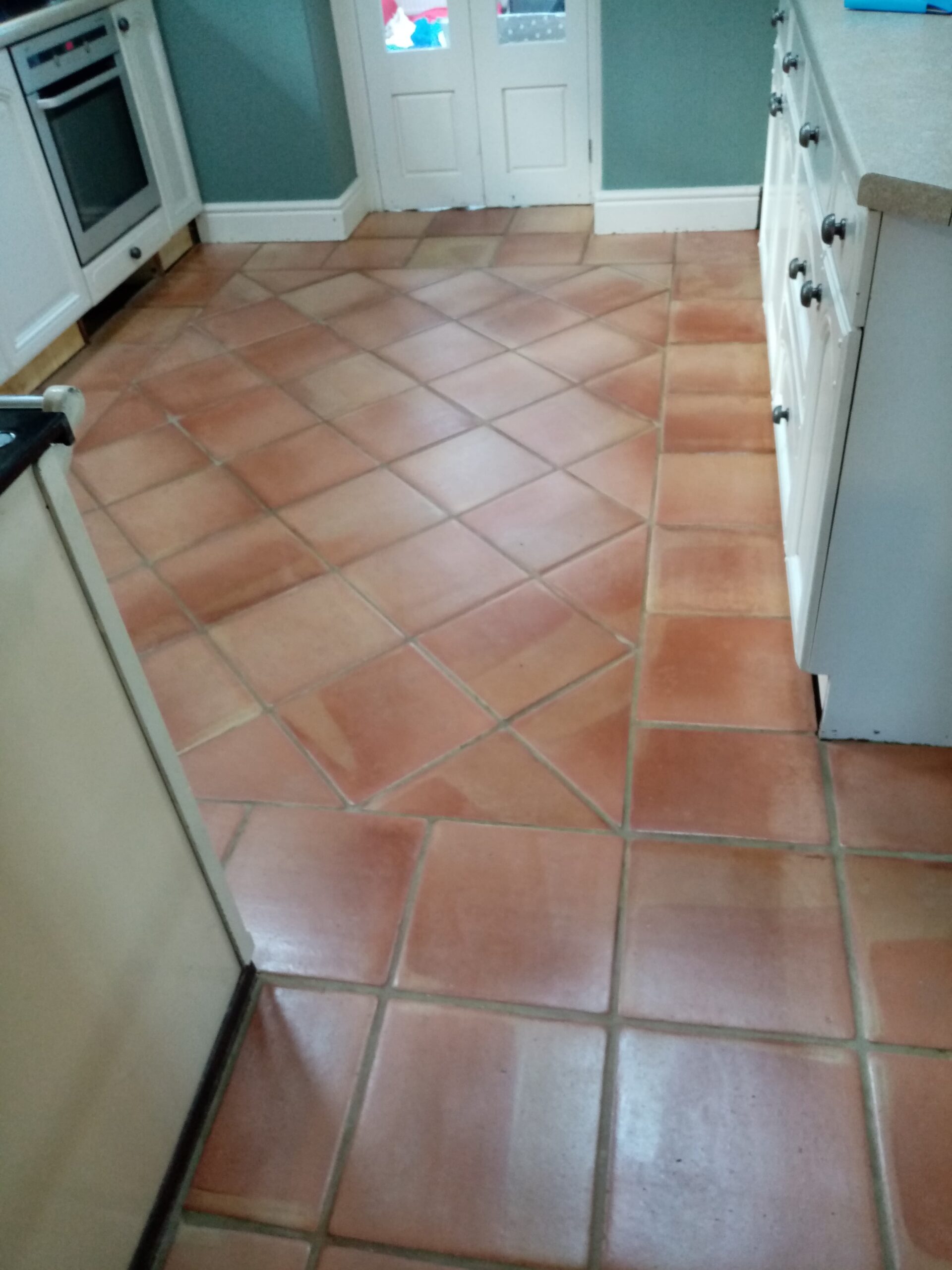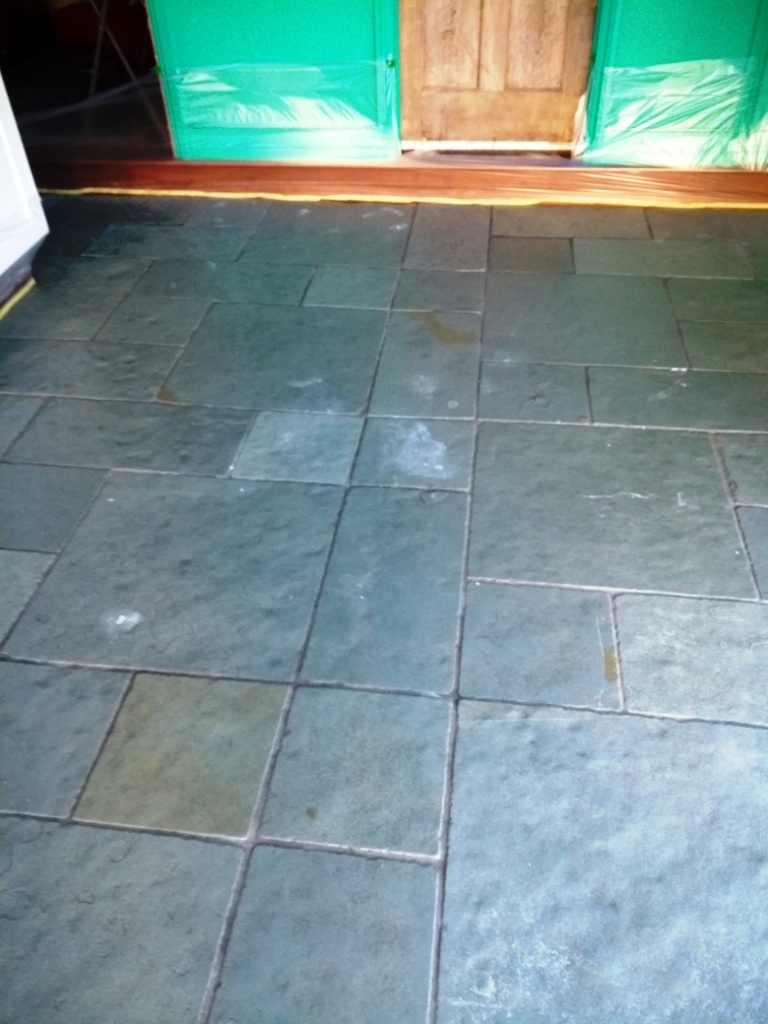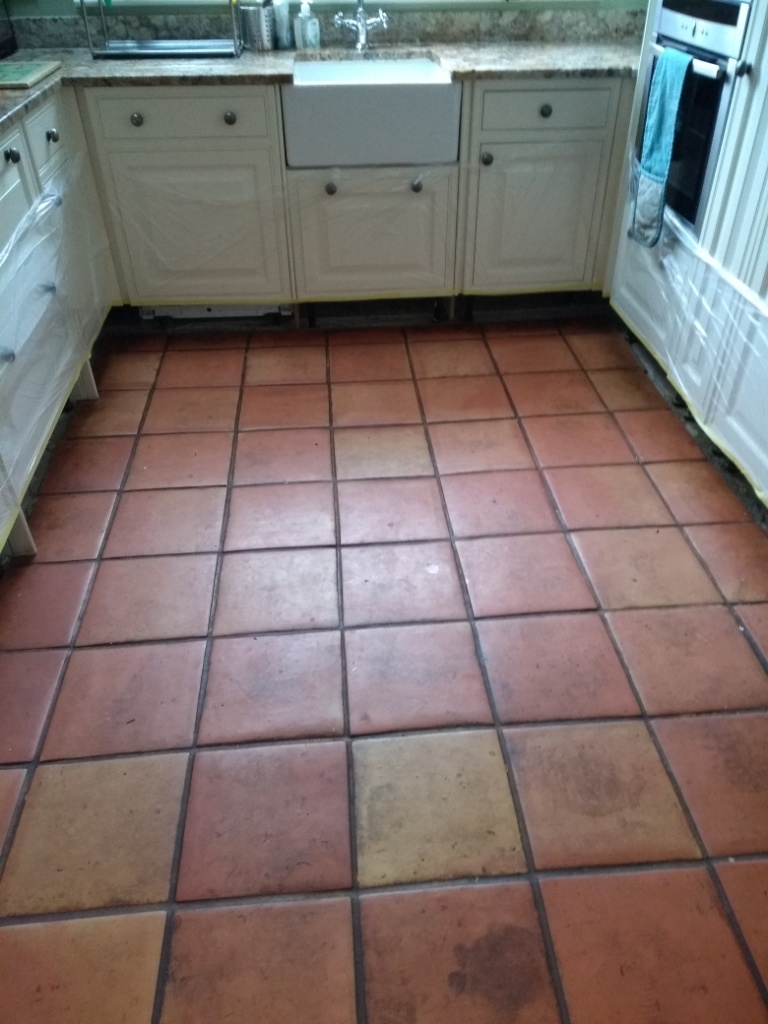Carpet Covered Quarry Tiled Hallway Floor Restoration in Cheltenham
A client moved into this house in Cheltenham and discovered an old Quarry tiled floor under the carpet in the hallway. The carpet was wet and smelly and had to go, so you can imagine the surprise when a perfectly intact tiled floor was discovered underneath. The tiles were looking very neglected and stained with self-levelling cement and carpet glue, however, keen to understand if it could be restored, we were contacted to take a look.
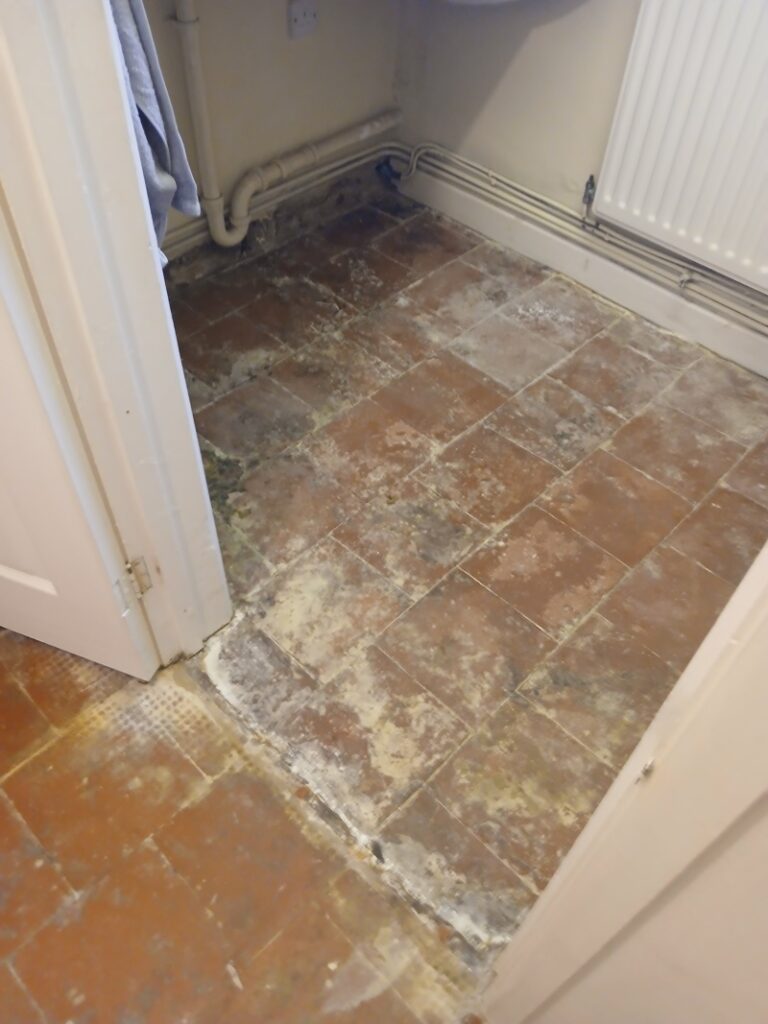
I visited the client and having worked on floors in a worse state than this one I was confident in being able to restore it back to a good condition. I worked out a detailed quote for the work which was accepted and a date set for my return to do the work.
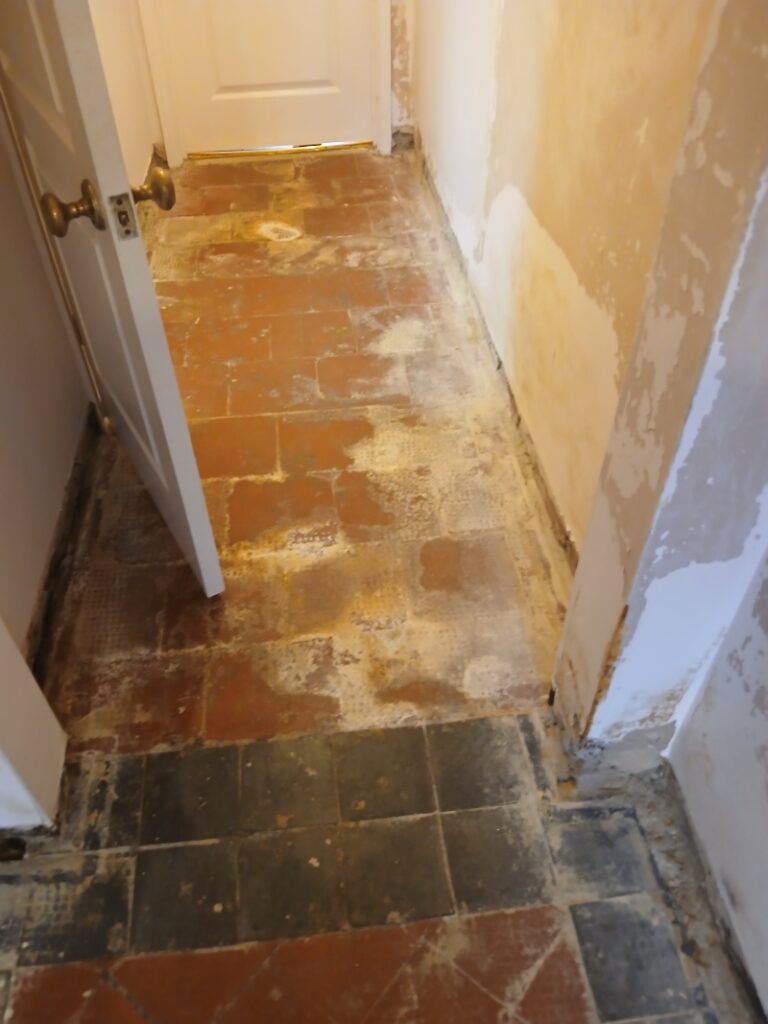
Cleaning a Quarry Tiled Hallway
On the first day work started to remove the hard adhesive and cement from tiles, to do this a very coarse 50-grit milling pad was worked into the floor using water for lubrication. Unfortunately, this wasn’t a huge success due to its thickness, so I switched tactics.
It was clear a different approach was needed so a steamer was used to soften the glue and cement and then it was scraped off by hand. It was a slow process but once most of the stubborn material was removed I was able to switch back to the 50-grit pad which was much faster. A wet vacuum was used throughout the process to remove the soiling and the floor looked much better with all the adhesive and cement removed.
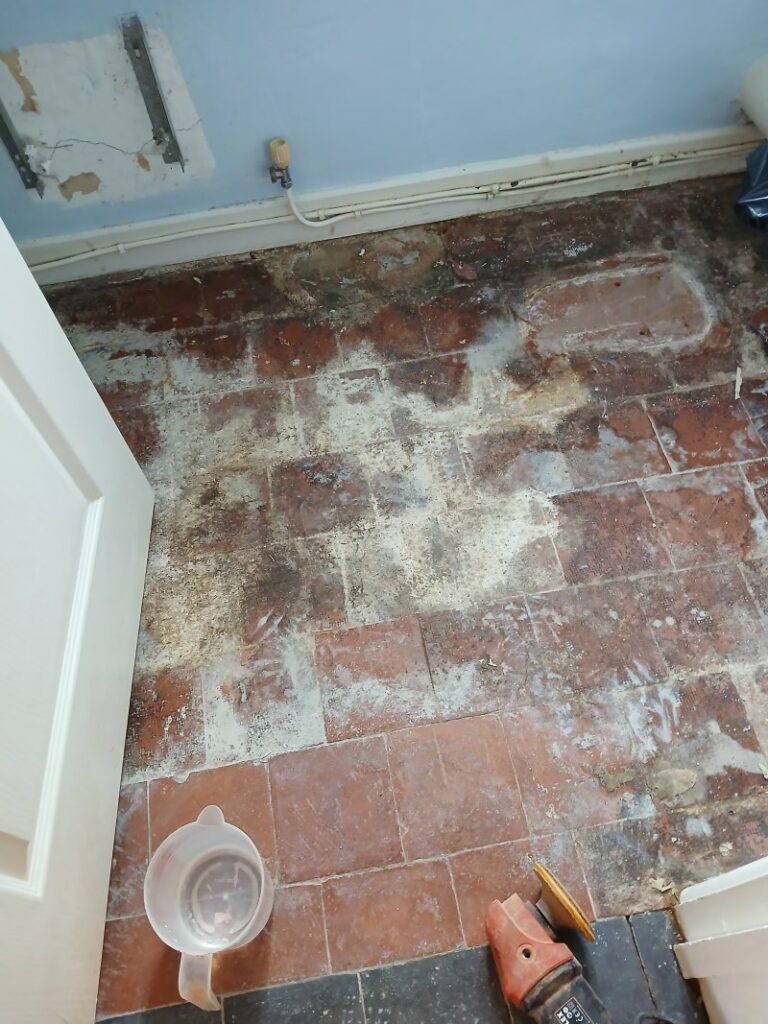
Next step was to clean the floor with Tile Doctor Remove and Go scrubbed in with a black pad to flush out any further dirt and soiling from the tiles. This product as its name suggests is a coatings remover so ideal for removing the final remnants of glue. The floor was then rinsed with water and dried with the wet vacuum before moving onto replacing the grout on parts of the floor where it had crumbled and become loose.
Sealing a Quarry Tiled Hallway
The floor was left to dry for three days then sealed after confirming the tiles were dry using a moisture meter. The reading I got was higher than I would have liked so clearly the floor had some damp issues. Old floors don’t have the benefit of a damp proof membrane (DPM) so need to be able to allow moisture to evaporate at the surface. The damp carpet was a good indicator that this could be an issue so I decided to seal the floor with Tile Doctor X-Tra Seal which gave it a nice finish and being externally rated can cope with the excess moisture.
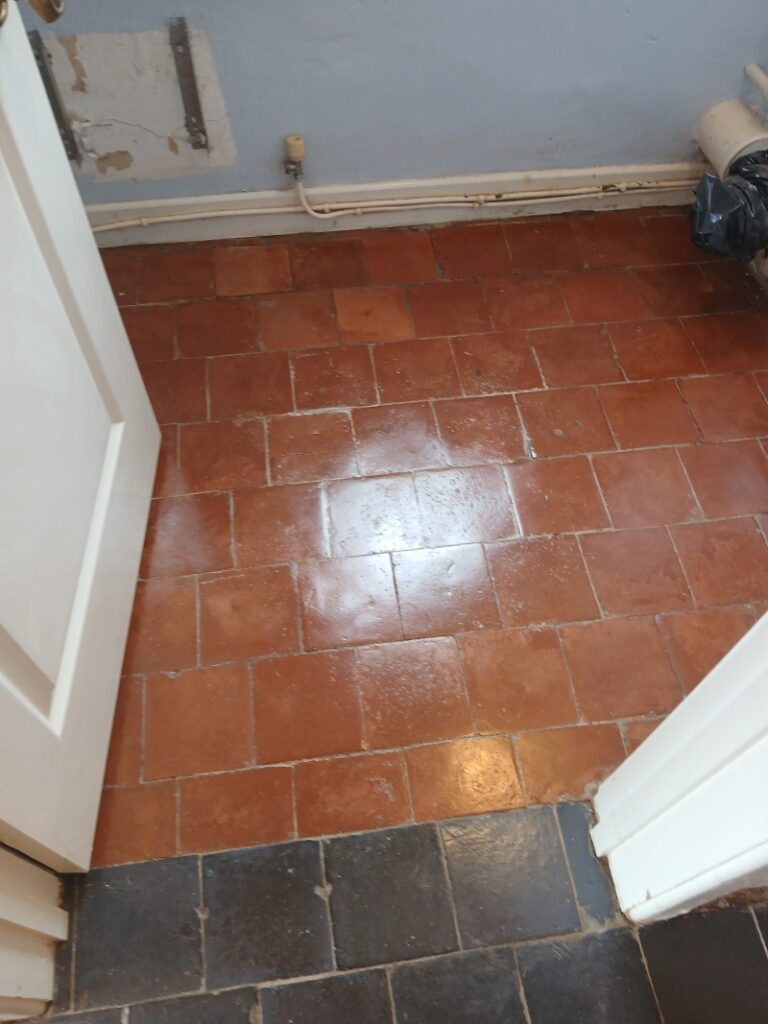
The floor looked amazing once complete, and my client was really pleased with results.
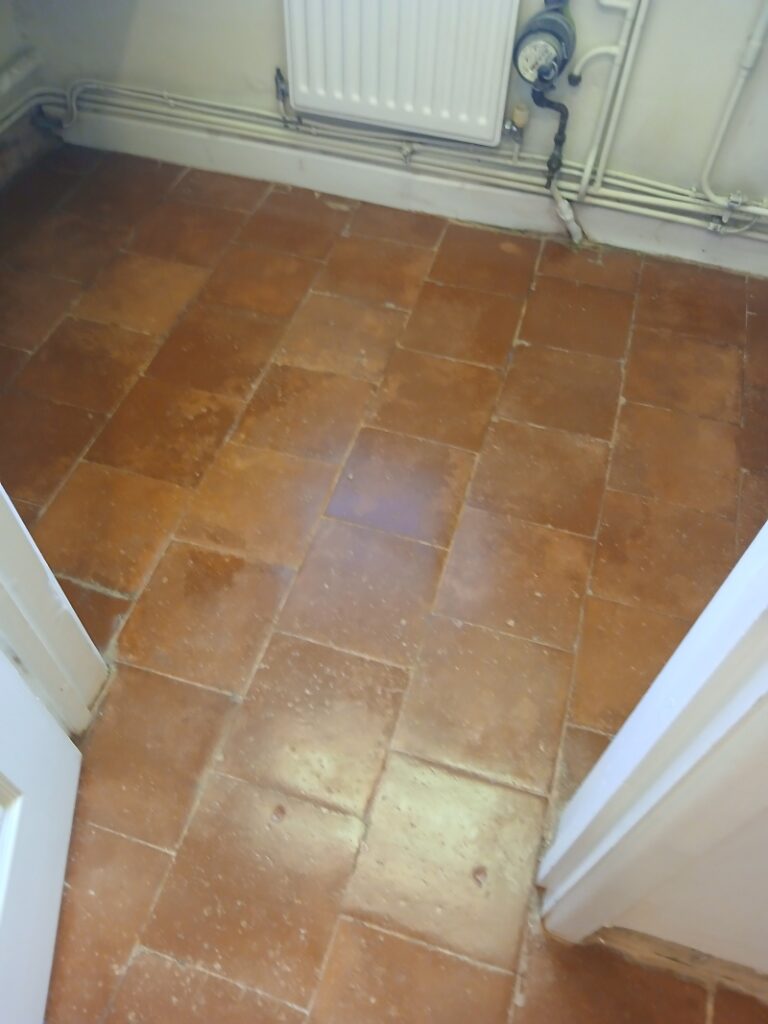
For aftercare I recommended using Tile Doctor Neutral Tile Cleaner, it’s a gentle effective tile cleaner that won’t harm the sealer.
Professional Restoration of a Quarry Tiled Hallway in Gloucestershire
Carpet Covered Quarry Tiled Hallway Floor Restoration in Cheltenham Read More »


